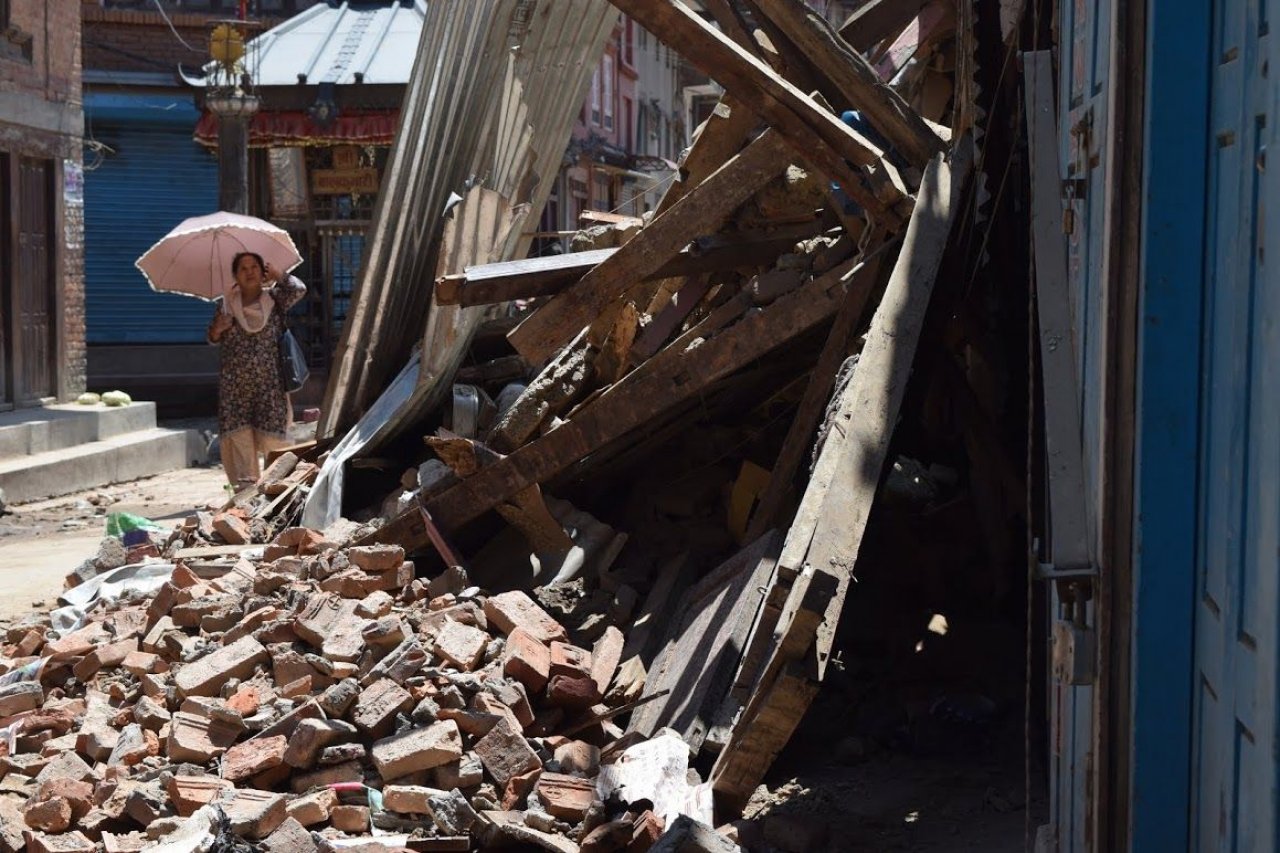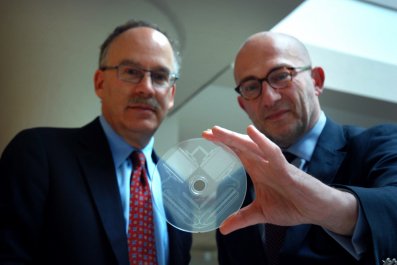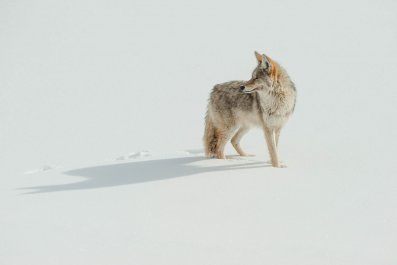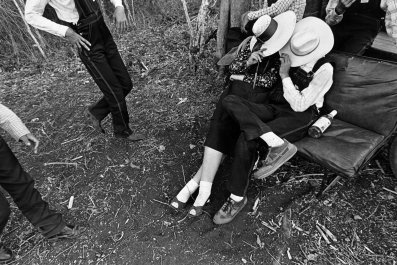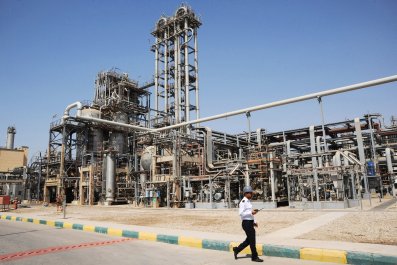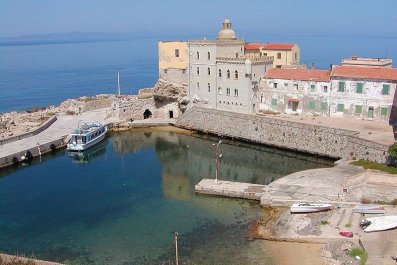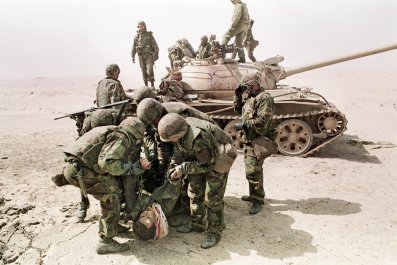KATHMANDU, Nepal—The plane circled Kathmandu for almost two hours. We turned right, then right, then right again. Every other turn, I could see the Himalayas in the distance; the sun set midway through our sixth or seventh lap. It wasn't clear we'd be able to land. Just a few hours earlier, a second major earthquake had shaken the area, a 6.4 aftershock to Saturday's disastrous 7.8-grade event.
When we finally did touch down and disembark on Sunday, we were met with packed gates, travelers camped out waiting for the next flight and lines of people seeking tickets out--lines stretching all through the airport and out the door, where they stood shoulder to shoulder in the rain.
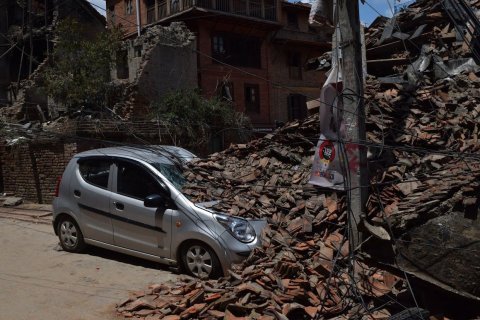
Taxi rates were 10 times the usual because no one wanted to be on the road: electricity was out in much of nighttime Kathmandu, streets had buckled and cracked, the rain was falling and more earthquakes were expected. Driving from the airport into the city, we saw people huddled together under umbrellas and makeshift canopies. Sleeping under a roof was tempting fate; better to weather the wet outdoors than risk being crushed should the earth move again.
By Monday, the third day of the disaster, the city had changed. The rains subsided, and the aftershocks stopped. Late in the day, government officials came on the radio to tell residents of Kathmandu that tonight, they could sleep inside.
But Kathmandu is not calm, despite the reports. It is on edge.
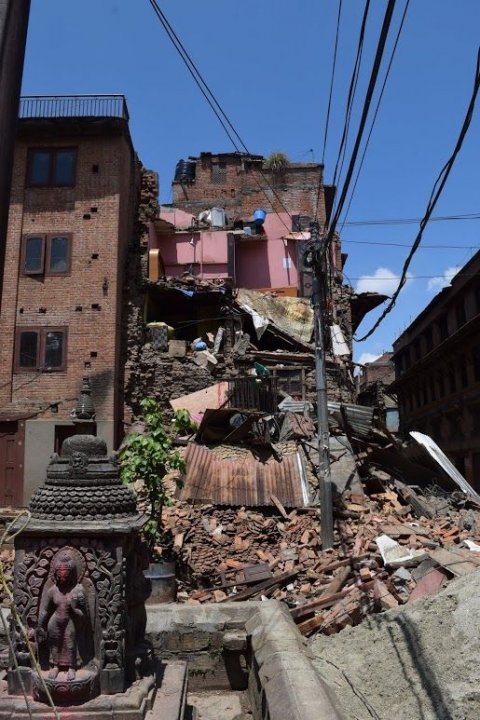
The Nepal government says at least 4,000 people have been confirmed dead as a result of the quake, according to the AP; bodies are stacking up at the ancient crematorium of the Pashupatinath Temple at the northern edge of the city. Thousands more are injured. Both numbers are bound to grow—they have been every few hours, and there are still many piles of rubble to sort through, in Kathmandu proper and in the outlying cities.
Ritesh Chitrakas, a young volunteer in a hard hat and carrying a tablet, tells me teams are still digging, as he did a day ago. "I literally dug out people," he says. "I carried their bodies to the hospital."

Today, his task is preventative: He is cordoning off buildings on the verge of collapse. In the historic Patan district, a good number of the structures are simple, hand-crafted affairs that are many, many years old, and there are no building structural standards to speak of. Every few buildings, bulges are visible at the ground floor, ready to collapse, as are cantilevers on the upper floors, ready to topple. Some are half-fallen, turned into a morbid dollhouses, the contents of Nepalese lives laid bare.
The streets of Kathmandu teem with soldiers dressed in blue camo, mostly deployed in the widespread search-and-rescue mission. "Ninety percent of the army is out there working on search and rescue," army spokesman Jagdish Pokhrel told the Associate Press. "We are focusing our efforts on that, on saving lives." Additional support has come from all over the world; already, search-and-rescue teams have arrived from India, Israel, China, Pakistan, Japan, Bhutan, the United Arab Emirates, the United Kingdom and more. The global Red Cross network has been activated, and appears to have made a significant impact; many Nepalis told Newsweek the Red Cross has brought them food and water, and it has been instrumental in arranging emergency additions to local hospitals.
The government has closed schools for at least the next five days, and most of the adults are not working so they can tend to their families. Much of the city has settled into makeshift campsites, built in city parks and around the many ancient temple courtyards and town squares. Here is where life goes on: old men huddle together and smoke cigarettes, kids play carrom (a sort of table shuffleboard) and families cook and eat.

In one of these temple complexes sits Jayson Rajkarnikar, a medical equipment technician in a pink Oasis T-shirt. He's been sleeping here for three days, he says: "I came out as soon as I saw it fall." He's referring to the Dharahara Tower, the 200-foot edifice rising out of Durbur Square that was the tallest building in the city, the now-ruined UNESCO heritage site. There were 180 bodies found in the rubble within eyesight of Rajkarnikar's home.
That the last round of predicted aftershocks hasn't come is the best news the area has had in days. Shops began to reopen, cell towers came back online and teenagers took selfies in front of cars whose hoods are smashed by fallen rubble. Tonight, many will move inside.
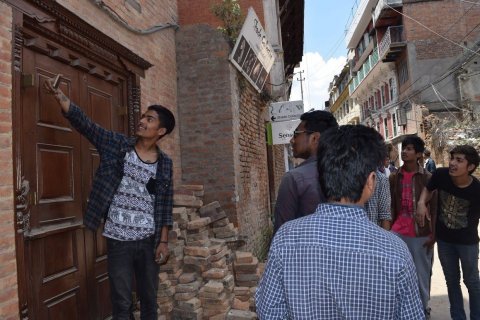
But many others no longer have homes to return to. And though there is neighborliness to the makeshift tent cities, they are far from healthy. There is no sanitation—waste is dumped into open sewage lines—and no clean cooking facilities, and, where the Red Cross can't reach, no safe drinking water or food. The country was already at significant risk: by some measures, it is one of the world's poorest countries—its per capita GDP is just $694, 20th lowest in the world—and it has limited resources to manage disasters of this scale. And many in Kathmandu believe the country's poorest—those residing in rural areas outside the city—may have been hit the hardest.
Nepal has long suffered because of its unique geography and history. The country is proud to have never been under the thumb of the British Empire, but that means it did not enter the 20th century having inherited the basic infrastructure (roads, railways, etc.) of, say, its neighbor to the south, India. The region's mountains compound the issue, and even today, towns that are just miles away as the crow flies take hours to drive between on unpaved, torturous roads.
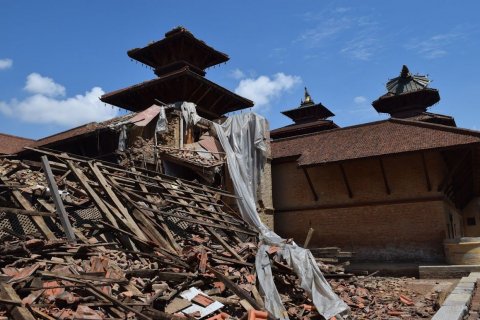
As a result, it remains unclear to what extent the earthquake has damaged the small towns and villages that dot the impacted area. Early reports are grim, suggesting entire towns have been flattened, but to date, it is little more than hearsay. Over the next few weeks, as these remote towns are finally reached by disaster relief teams and the media, the big picture is likely to change. Lex Kassenberg, of Care International, told The Guardian that the final death toll will be somewhere in the 10,000 to 15,000 range.
Travel to Kathmandu was provided by the Johns Hopkins International Reporting Project.



